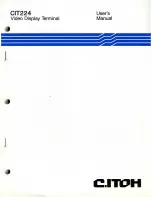
114201I – System Installation Manual
15
Before Installing the Batteries
Tools
CAUTION
Always use insulated tools when you work with batteries. Always torque connections to
the manufacturer’s recommendations.
When you work with system batteries, you need the following tools. The tools must
be insulated so they do not short battery terminals to the cabinet. Wear the safety
equipment required by local code whenever the doors are open and whenever you
are working on batteries. Other tools may be necessary for optional batteries.
•
Digital volt-ohm meter
•
Conductive grease or petroleum jelly
•
7/16” socket wrench
•
Brush (to apply grease or petroleum jelly to terminals)
•
3” extension socket
•
Safety equipment required by local codes
•
Ratchet
•
Torque wrench calibrated in inch-pounds or Newton-meters
•
Wire brush
•
Safety glasses with side shields
•
Electrical tape
Battery Voltage (vdc)
Models 16.7k
24k
33k
40k
50k
Battery
Volts
240v 240v 240v 240v 240v
Battery Cable Sizing
The battery cable or wire used varies. For the 100 AH battery (SL-12105) the size is 6
AWG. For the 200 AH battery (SL-12205), the size is 4 AWG. This is because the
batteries string current varies with battery type.
If the batteries must be more than two feet (0.6 meters) from the system, you may
need to install larger battery cables between the battery cabinets and the system.
Using long cable runs and larger diameter cables require a modified installation of the
system; call SERVICE if you did not order the longer, larger-diameter cable with the
system.
DC Disconnect
Systems have a Main Battery Circuit Breaker inside the electronics cabinet; this breaker lets
you remove DC power from the batteries. Systems also have a fuse on each battery string
located in the battery cabinets.













































